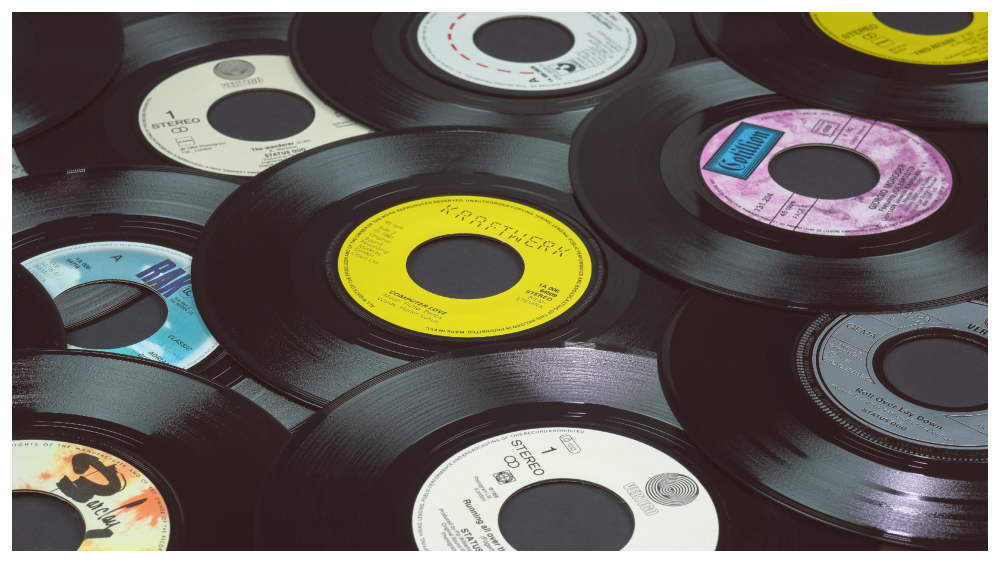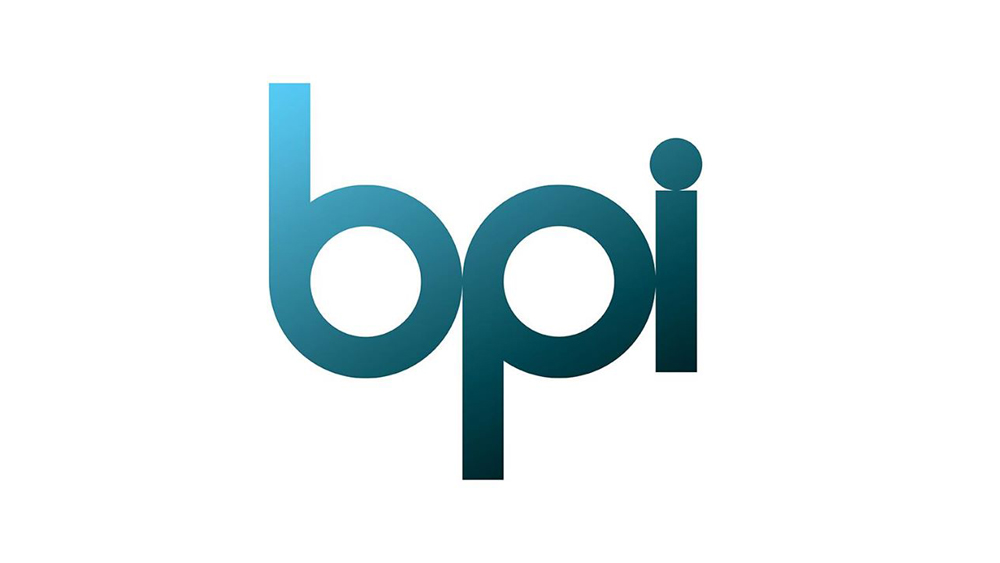It’s been hard to avoid discussion of the so-called vinyl revival for over a decade now. Even back in 2011, the Official Charts Company reported that sales of the format were up 40% year-on-year, thanks to releases from the likes of Radiohead, Adele, Beady Eye, and Arctic Monkeys. More recently, albums from Wet Leg, Fontaines D.C., Sam Fender and Taylor Swift have been among vinyl’s biggest sellers, alongside classic albums like Fleetwod Mac’s Rumours and Nirvana’s Nevermind.
But while it’s often been written off as a fad, it shows no signs of letting up. In fact, in January this year the Digital Entertainment and Retail Association (ERA) released data showing that vinyl had overtaken CD in terms of sales for the first time since 1987.
Why is vinyl so popular again? After all, surely there was a reason that CDs took over – records take up more space and are more prone to warping. But there’s a romantic quality to them that CDs just don’t have. Listening to a record is more ceremonial, almost. You have to pay attention to the music, ready to flip the record over, rather than simply pressing play and going back about your day for the next 40 or 50 minutes.
‘Vinyl is the preferred collector format – fans love the tangibility.'
‘There is a whole raft of reasons for vinyl’s continuing growth,’ explains Kim Bayley, CEO of the ERA. ‘Promotions like Record Store Day have introduced whole new generations of buyers to the format as well as re-invigorating love for the format among older audiences.’
‘Vinyl is the preferred collector format – fans love the tangibility, collectability, and warm sound of vinyl as well as the artwork.’
‘It is fascinating, but perhaps unsurprising, to see vinyl officially overtake CD sales for the first time since the Eighties due to its appeal to new audiences, collectability and warmth of sound that all other formats, including digital, struggle to replicate,’ adds Paul Clements, CEO of MCPS.
‘Vinyl products, inclusive of the products’ art cover, also provide a tangible connection between the artist and consumer and this connection, fandom and loyalty, cannot be underestimated After witnessing the significant rise of this nostalgic format over the past few years, we watch closely on where this renewed consumer appetite for physical products may go next.’
Streaming, of course, dominates. Platforms like Spotify and Apple Music are huge. Towards the end of last year, Spotify passed 200 million paid subscribers for the first time, reaching almost 500 million monthly active users. These are massive numbers. There’s no two ways about it.
Kim describes streaming, along with vinyl, as the ‘new yin and yang of the music business, providing completely different but complementary benefits.’ With streaming, you’ve got almost all the music you could want at your fingertips, even when you’re on the move. In contrast, vinyl is more intimate and immersive. You can’t chop and change between tracks at a whim – rather, you choose the music you want to listen to carefully, putting more thought into it.
Vinyl isn’t cheap, but it’s easy to discover new music on your streaming platform of choice and then treat yourself to a favourite album on vinyl every so often – or root through second-hand records in independent stores and charity shops for a bargain.
The format is clearly popular with consumers, but how do the artists themselves – and those who work with them – feel? In some ways, vinyl can really help bands form that connection with their fans, and of course it’s more merchandise to sell. But on the other hand, manufacturing delays can mean that vinyl is more trouble than it’s worth in some cases, particularly with more independent or underground artists.
‘Vinyl and its resurgence are absolutely crucial to us as a band and to our business model,’ says IST IST bassist Andy Keating. ‘We’re not a big streaming band so physical sales, merchandise, and tour earnings are what keep us ticking over. We’re quite old school in that sense.’
‘When our second album The Art of Lying got into the Top 100 in November 2021, nearly two-thirds of the total sales from pre-sale and chart week were vinyl.’
'If you take care to make a visually interesting product then it excites fans, looks bloody nice too, and gives you another creative outlet in terms of artwork and bonus tracks.’
Colin MacIntyre, who releases music under the name Mull Historical Society, can relate to this. ‘I see my fanbase definitely engaging with this format, and it helps with merch sales and therefore income at shows. It also provides for a different relationship with certain demographics of your audience, in that if you take care to make a visually interesting product then it excites fans, looks bloody nice too, and gives you another creative outlet in terms of artwork and bonus tracks.’
This month, he’s releasing his older albums on vinyl as an anniversaries retrospective – including his 2004 album This Is Hope. At the time, it was never released on vinyl, so it’s making its analogue debut, something he says ‘reflects the changing attitudes to vinyl now.’
For London singer-songwriter George Hennessey, ‘The fact that vinyl has made a prominent comeback over the years will help recoup some of the investment into making the album as it is an extra format we can generate income from.’
But it isn’t all plain sailing. There have been all sorts of delays, exacerbated by factors like Brexit and the Covid-19 pandemic, but also by the largest artists ordering thousands of copies of vinyl.
There was a period towards the end of 2021 in which Adele and Taylor Swift were releasing new albums on the same day, while Ed Sheeran said that his album = had to compete with albums from Coldplay, ABBA, and Elton John to meet its release date. When some of the biggest artists order thousands or even millions of vinyl copies, they’re in turn using up many of the resources required to produce vinyl. This then causes delays for other artists. An investigation in Mixmag in 2021 found that there’s a global demand for around 400 million vinyl records each year, but the capacity to produce just 160 million.
There risks being an almost two-tier divide, with the biggest artists being able to produce thousands of copies, while independent or more underground artists struggle to manage delays.
And then there are the artists who can’t afford or aren’t able to produce on vinyl altogether. American artist Ethel Cain’s critically-acclaimed debut album Preacher’s Daughter is still waiting for a vinyl release, and she tweeted last year that ‘there are no immediate plans for vinyls as making a vinyl independently is very difficult rn. hopefully in the future.’
Meanwhile, Against Me!’s Laura Jane Grace has also spoken out about the issues surrounding vinyl, and the dilemma of either delaying release dates or staggering them so that albums are released digitally first.
‘The last 18 months of vinyl production have been an unparalleled nightmare if we're being honest,’ says Jack Clothier of Alcopop! Records, who work with artists including The Subways, Tigercub, and Art Brut. ‘For a small team, it has felt a lot like you spend most of your time redoing timelines and apologising to all and sundry for yet another delay.’
‘It’s nice to hear vinyl is doing so well, but if it keeps crashing up like it is price-wise, it’s going to be unsustainable for smaller bands to get involved.’
Fortunately, not every artist has been affected. ‘Luckily we have actually been fine so far. It takes a long time and we expect that. Fingers crossed we avoid cancellations!’ says The Velvet Hands guitarist Dan Able.
'Perhaps the limited nature of vinyl runs is what makes owning a copy so special.'
But even he concedes that it’s not viable to release everything on vinyl. ‘As an independent artist, I don’t think so. I’m not even sure some bigger label-backed artists can afford to release everything on vinyl. Perhaps the limited nature of vinyl runs is what makes owning a copy so special. If there’s enough demand you can always go back and do a re-release or a numbered release for collectors.’
For George, it’s just part and parcel of being a musician. ‘There are always delays in the music world,’ he says. ‘From recording, to mixing, to mastering and distributing there are always bumps in the road you have to overcome as a musician.’
We shouldn’t discount CD forever, either. While vinyl is all the rage right now, Kim says that it would be ‘foolish’ to write the format off. In terms of volume, it still outsells vinyl, and is more robust than vinyl while offering a similar sort of permanence.
It’s hard to say if or when the popularity of vinyl could plateau. But, as Kim emphasises, ‘With 15 years of growth behind it, it’s safe to say it’s not a fad and will continue to form an important part of all artist campaigns going forward’.
It’s popular with younger and older consumers alike, and with people in the industry themselves. As Jack puts it, ‘We love vinyl. Our community love it. Our bands REALLY love it. It's a bloody great format, isn't it? The crackle of the needle and the depth of the sound. It hits you right in the throat. But something has to give.’





